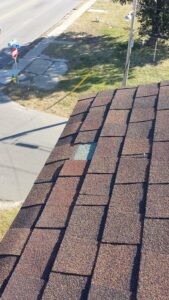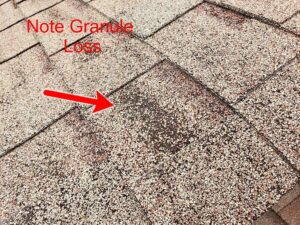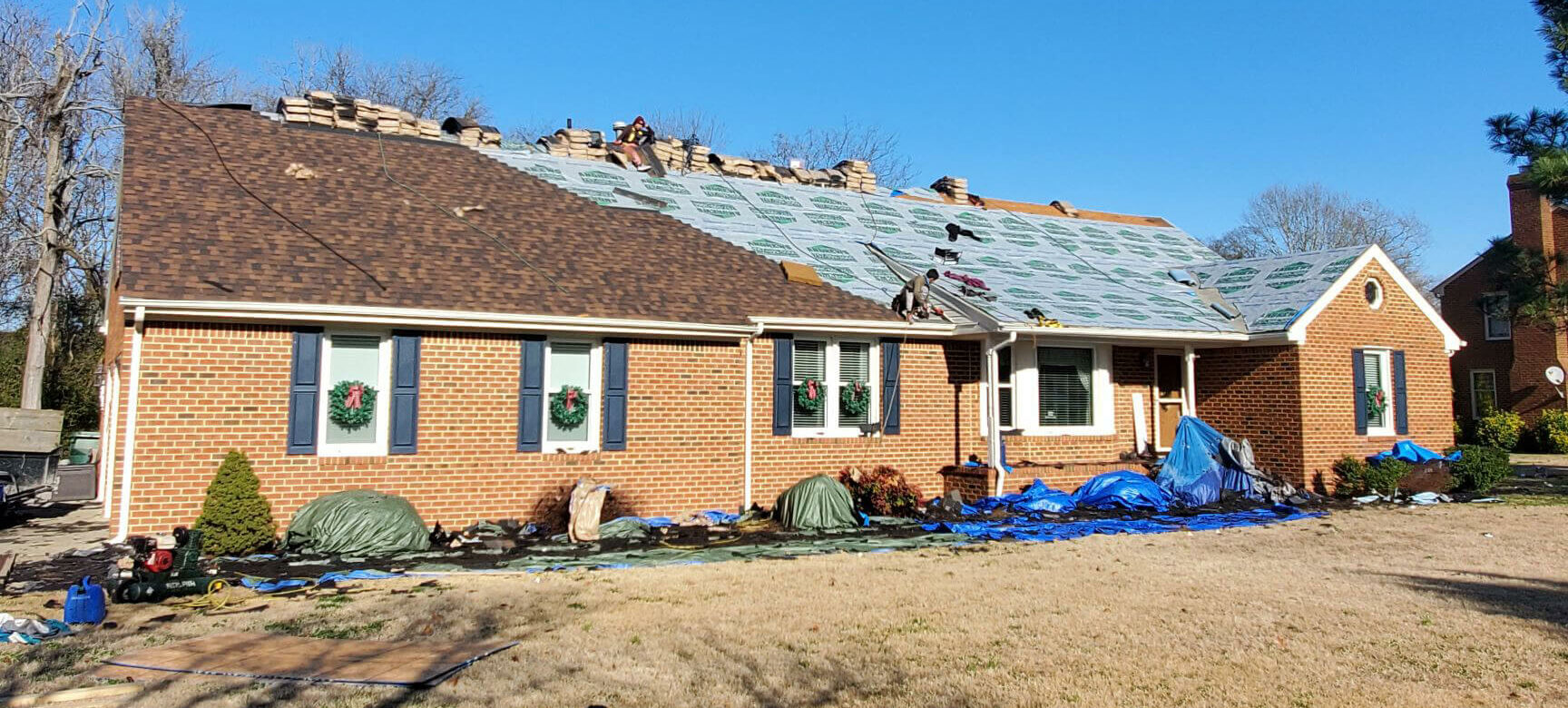As winter storm warnings, tornadoes and gale warnings sweep across the country, homes are likely to incur damage in one way or another.
Accidents and damage happen, especially when you’re in a storm-prone area like the Tidewater region of Southeast Virginia. As much as we encourage homeowners to prepare their homes and roofs in advance of bad weather to avoid certain issues, sometimes there’s no preparing for mother nature.
So, if you suddenly hear the “drip drip drip” or see the telltale signs of a roof leak, there are things you can do immediately to help mitigate damage until the storm subsides and a full, professional repair can be done.
Document Everything
This may not be your first instinct, but it’s really very critical to document as much as possible as soon as you notice the damage so you can provide this to your insurance company. The clearer you are able to make it that the leak was caused by storm damage, the more likely your claim is to be processed and the quicker it can be resolved.
Of course, do not put yourself in danger in the midst of a storm to get on your roof and take photos, but from where you can inside your house, photograph or video the active leak. Then when it’s safe, take photos on a level area from the outside. Some insurance companies suggest photographing your home when there is no damage and keeping those photos on file for comparison. This makes it easier to show where exactly damage has been done and prove that it was not there prior to the event.
Move Valuables
Another first step in the event of roof damage is to remove any valuable items from the area of the leak. This is particularly important for electronics as they don’t play well with water and can cause electrical damage or fires. Any artwork or photos hanging on walls where the leak may spread should be removed. Curtains, rugs and furniture should be pulled away from the area. If items have been damaged, be sure to document that as well for insurance purposes. Then set them aside to be thoroughly dried and cleaned to avoid mold and mildew.
Contain the Water
If you are able to identify the source of the leak, and the leak is dripping straight downward, place a large container underneath it to catch the water. Check on this container often and empty it before it becomes too heavy or nearly full. It’s also a good idea to place a tarp or sheet of plastic underneath the container in case any water splashes out or spills over, but do not use plastic or tarping to collect water, as it can be difficult to collect and remove water from sheeting without further damaging insulation, flooring or drywall nearby. If plastic sheeting is used under your container, make sure to remove it as soon as the issue is repaired as it can become a vapor barrier, causing condensation where it should not be, without giving it a way out.
Temporarily Cover the Leak
Tarps can seem like a good, easy solution for leaks, but the fact is that putting them onto your roof is dangerous, and if they aren’t placed perfectly over the peak of your roof or tucked under the shingles just right, then they can actually collect water and direct it into other vulnerable areas of the roof. They are also likely to blow off or shift in ways that can cause additional damage. If a large portion of your roof is damaged, this may be the only option, but for smaller areas of damage, try a different patching method instead. Roofing tape and caulk can be used safely from inside your attic to help close up holes and prevent additional water from entering. You can find these items at your local hardware store, and you’d be wise to purchase them in advance of a storm so you’re not running out in the middle of one to stock up. But keep in mind – these are temporary solutions only and professional repairs will need to be made as soon as possible.
Dry Things Out
Anything that has gotten damp or drenched from a roof leak should be dried out as soon as possible. Good ventilation can help in some cases, but you may also want to use a large floor fan directed at any damp areas to help dry them out faster. This will help prevent the growth of mold and mildew, which can lead to additional damage to valuables and your home’s structure. When possible, it is still a good idea to have a professional come out and inspect any wood or materials that got wet to ensure no rot, termite or other structural issues are present.
Call a Professional
As soon as you are able, contact a trusted roofing professional. Even if they cannot come right away, call them as soon as you notice the damage so you can be added to their schedule. It’s never advisable to try and repair your roof yourself – it’s dangerous and if repairs are done incorrectly, it can cause major damage to the entire structure of your home, not to mention your repairs may not meet code requirements and could make it difficult to insure or sell the home in the future.
If you’ve experienced roof damage and leaking, contact Andrews Roofing. We have extensive experience with the type of issues Hampton Roads homeowners experience during storms and bad weather, and we have a local reputation for quality workmanship.







